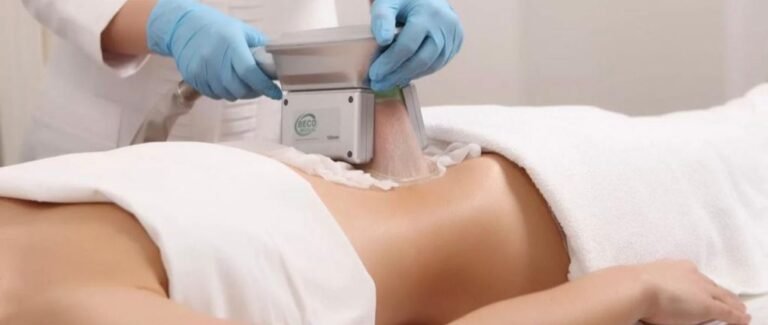When you’re a new parent, your baby’s health and hygiene naturally become your top priority. One task that quickly becomes part of your daily routine is cleaning baby bottles. And while it might seem simple, using the right tools—especially a baby bottle brush and an electric bottle cleaner—can make a huge difference in keeping feeding equipment safe, germ-free, and ready to use at a moment’s notice.
In this guide, we’ll walk you through how to choose the best baby bottle brush and electric bottle cleaner that suits your lifestyle, saves you time, and keeps things sparkling clean.
Why Bottle Cleaning Matters More Than You Think
Babies have developing immune systems, and any leftover milk residue in bottles can quickly grow bacteria. Regular, thorough cleaning is essential, not just for hygiene but also for your peace of mind. Even if you’re using sterilizers later, cleaning comes first—and for that, you need the right tools.
What to Look for in a Baby Bottle Brush
The market is full of options, so it helps to know what features really matter when selecting a baby bottle brush.
1. Soft Yet Effective Bristles
Look for brushes with gentle, flexible bristles that can clean without scratching bottles. Silicone bristles are popular for their durability and easy-to-clean design.
2. 360-Degree Cleaning Design
Some brushes rotate or have handles that let you twist and reach every corner of the bottle. This is especially helpful for narrow or angled bottles.
3. Non-Slip Grip
Bottle cleaning often involves soapy water. A non-slip handle makes the job easier and safer.
4. Built-In Nipple Cleaner
Some brushes come with smaller attachments or built-in tools to clean nipples, which are tricky to scrub with standard brushes.
5. Easy to Dry and Store
Opt for brushes with built-in stands or ones that come with holders that let them air-dry properly. Bacteria thrive in moist environments—drying matters.
Why You Might Need an Electric Bottle Cleaner Too
While a baby bottle brush is great for daily use, an electric bottle cleaner can take your cleaning game up a notch—especially during those exhausting newborn weeks.
Here’s why many parents choose to include one in their toolkit:
1. Time-Saver
Most electric cleaners can wash and even dry multiple bottles at once. Perfect when you’re juggling diaper changes and feeding schedules.
2. Consistent Deep Cleaning
Machines use water jets, steam, or ultrasonic vibrations to remove milk residue from all corners of the bottle—often better than a quick manual scrub.
3. Multi-Functionality
Some electric models offer sterilization, drying, and even storage—all in one device.
4. Hands-Free Operation
Just press a button, and let the machine handle the dirty work. That means fewer missed spots and more time for cuddles.
How to Choose the Right Electric Bottle Cleaner
Here are a few tips to help you pick a reliable electric cleaner without the confusion:
1. Check Compatibility
Not all machines fit every bottle brand or size. Look for a model that works with your bottle shape and type.
2. Easy to Clean
Ironically, your bottle cleaner needs to be clean too. Choose models with removable parts that are dishwasher-safe or easy to wipe down.
3. Noise Level
If you’re planning to run the cleaner during nap time, opt for a quieter model. Check product reviews for feedback on sound levels.
4. Drying Feature
Some electric cleaners only wash, while others include drying. If your environment is humid, a drying feature can prevent mold and mildew.
Can You Skip One and Just Use the Other?
Technically, yes—but using both offers the best of both worlds.
- A baby bottle brush is ideal for quick rinses after feeds and for scrubbing stubborn spots.
- An electric bottle cleaner is a lifesaver for end-of-day deep cleans or when you have several bottles to wash at once.
Think of the brush as your everyday helper, and the electric cleaner as your backup team on busy or sleep-deprived days.
Tips for Bottle Cleaning Success
- Clean immediately after use: Don’t let milk dry inside the bottle.
- Use warm, soapy water: Safe and effective for breaking down milk residue.
- Replace brushes regularly: Every few weeks or when bristles fray.
- Sanitize weekly: Even with clean bottles, occasional sterilizing is smart.
- Let everything dry completely: Moisture breeds bacteria—air drying is best.
Read: Why an Electric Baby Bottle Brush is a Game Changer for New Parents
FAQs
1. How often should I replace my baby bottle brush?
You should replace a baby bottle brush every 4–8 weeks if used regularly—especially if bristles become frayed, discolored, moldy, or lose firmness. Frequent use (e.g. multiple bottles daily) may mean replacing sooner (4–6 weeks).
2. Can I use the electric bottle cleaner on all bottle types?
Most electric bottle cleaners are safe for plastic, glass, and silicone bottles, provided the brush heads are soft and non-scratch. Always check the manufacturer’s instructions to be sure your bottle type is supported.
3. Does an electric bottle cleaner work on nipples and smaller parts?
Yes, many electric models include interchangeable attachments for nipples, rings, straws, and small components to ensure thorough cleaning in tight spaces.
4. Do I still need to sterilize bottles after using a bottle brush?
Absolutely. Cleaning removes milk residue and soap, but sterilization kills bacteria and viruses. Especially for newborns, use a sterilizing method like steaming, boiling, or sanitizing solution regularly—even after brushing.
5. Is investing in an electric bottle cleaner worth it?
If you’re washing bottles multiple times a day, an electric cleaner can save time and hand strain, and often offers more thorough cleaning than manual brushes. Many parents find the investment especially valuable during newborn months.
6. Can I use regular dish soap with these tools?
Yes—use mild, baby-safe dish soap with both your manual baby bottle brush and electric cleaner to effectively remove milk fats and residue. Avoid harsh or scented detergents.
7. How should I clean and store my electric bottle cleaner?
After each use, rinse cleaning heads thoroughly, let them air dry completely, and store in a clean, dry place. Avoid soaking or submerging the motorized base to prevent damage. Replace brush heads per manufacturer recommendations.
8. Can both tools be used together effectively?
Yes—start with a pre-rinse, then use the electric bottle cleaner for main cleaning, followed by the manual baby bottle brush for tight corners or any residue left behind. Finish by rinsing, sterilizing, and air-drying.
Final Thoughts
Choosing the best baby bottle brush and electric bottle cleaner doesn’t have to be overwhelming. Think about your daily routine, how much time you can devote to cleaning, and your baby’s specific needs. With the right tools in hand, keeping your baby’s bottles spotless becomes easier, faster, and far less stressful.
A little effort now means one less thing to worry about during those precious early months. Happy cleaning—and happy parenting!





